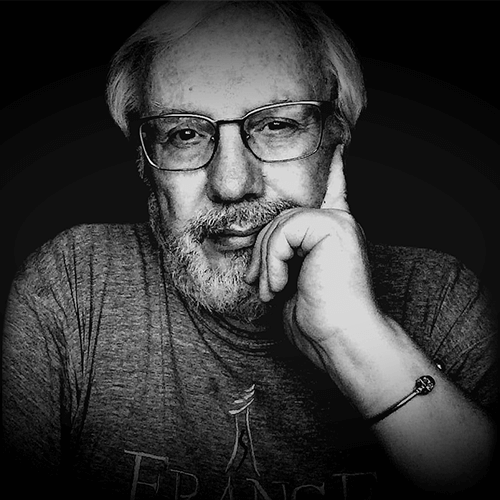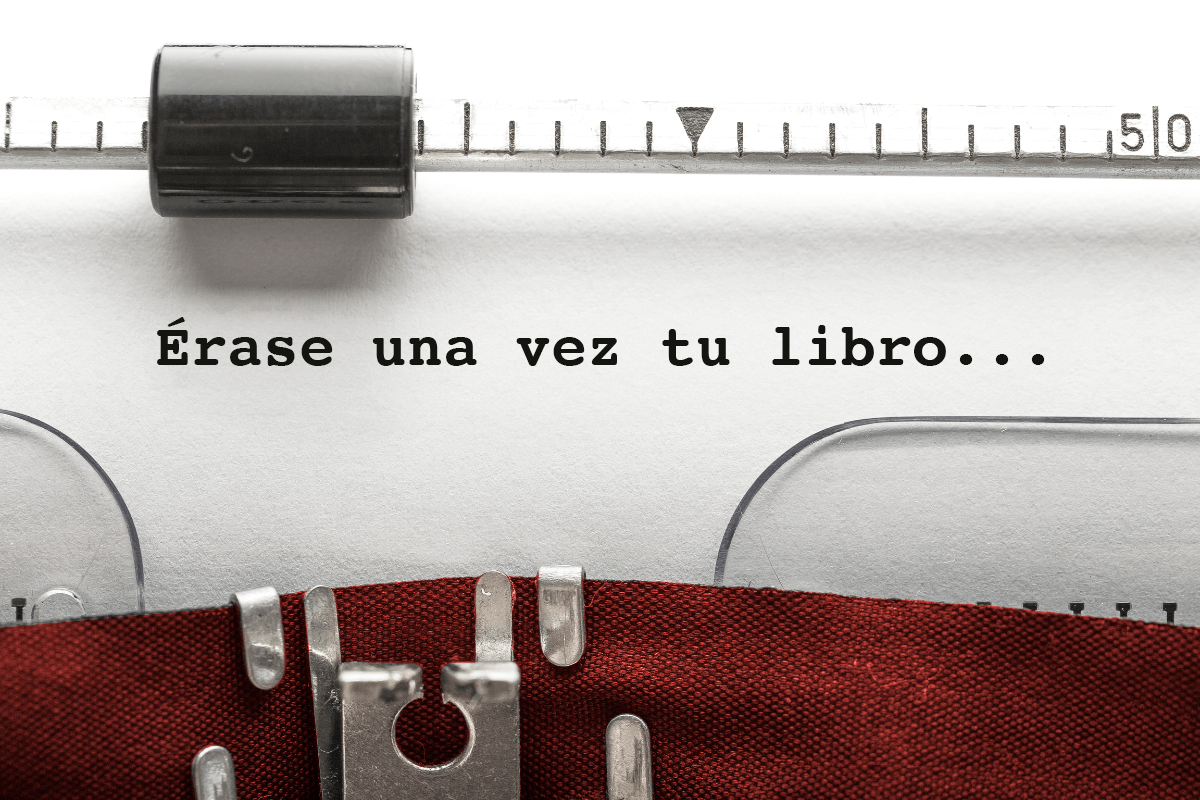By Hugo García Michel
One of the fundamental dreams of every writer has always been to see his or her literary creations printed in book form. Novelists, short-story writers, poets, essayists, authors long for the tangible fact of seeing their texts materialized on paper and ink, and this has been the case practically since the invention of the printing press or perhaps even since the time of the papyrus or the medieval copyists.
The fact of seeing for the first time (and for the second and for the third and ad infinitum) the written work converted into a book is -and I say this from my own experience- a sensation difficult to express in words, an almost indescribable emotion.
However, achieving it is not easy. Quite the contrary.
Publishers in their labyrinth
For a publishing house to publish an author, multiple and very specific conditions must be met, especially if the authors are beginners and/or unknown. This is explainable and understandable. Publishing houses are businesses and as such they have to survive by generating profits. This means that in order to publish someone they require certain guarantees that allow them to recover their investment. Because of this, they have established a series of filters that very few manage to go through until the final steps, that is, until the publication of their book.
Needless to say, if the author is well known and/or has good public relations, the filters will be minimal or even non-existent. But what I want to talk about here are those who do not yet have a name and want to publish for the first time. Established writers do not generally suffer from any problem, because they are a guarantee -relative or certain- of sales.
So, what are the initial and intermediate steps to achieve publication? In principle, and although it may seem obvious, the author must take or send his or her text to the publishing house of his or her choice. If it is a large company, it is most likely to have a department specialized in receiving manuscripts. Of course, before doing so, the writer must be sure that his document has enough qualities to interest the editor, that is to say, that it is well written and adheres to the most elementary rules of writing (spelling, syntax, etc.) and that it is of interest, either because of the topics it deals with or because it is a true masterpiece (I know, almost all authors think that theirs is a masterpiece).
Once the text has been submitted, the only thing left to do is to wait, and waits are usually very long and test the author’s patience. Most likely, the receiving department, as a first filter, will do a quick review of the document and decide whether or not it is worthwhile (if it is a small publisher, the decision is often made by the editor-in-chief himself and that is the end of the line for most manuscripts).
In the hands of different subjectivities
If the submission passes the first filter, it will be sent to a reviewer, who will read it more carefully and decide whether to recommend it for publication. Needless to say, many texts are also discarded here, either because they do not meet the necessary requirements or because the subjectivity and tastes of the reviewer simply determine that they are not good enough.
Does this mean that if the book is approved in this step it will be published? Unfortunately not. There are still other subjectivities to be decided. The book judged as “publishable” goes to the members of the editorial department, who, after reading the opinion, give it a new reading (sometimes detailed, sometimes superficial) and if they accept it, they pass it on to the editor in chief or editorial director, who will have the last word.
This whole process, as I indicated above, can take weeks or months, even more than a year, a time that will probably get on the nerves of the author, who is the object of this long wait.
A relative triumph
Let’s suppose that the editorial director also approves the publication of the book. Does this mean that it will be printed, distributed and made available to the public? Not necessarily. The opinions of the hardest and most bureaucratic part of the publishing houses will still be missing: the sales and marketing department. There they will weigh up the commercial possibilities of the volume and whether it guarantees sufficient profit to be profitable.
And if the book manages to cross this last circle of hell, it will return to the hands of the editorial director and he himself or a council will decide whether it will finally be published. If so, we will now have to wait for it to be programmed, edited (possibly with a proofreader’s review), printed and distributed (although there may suddenly be surprise decisions – and I say this again from my own experience – that stop it at the last minute and for “technical reasons” put back the already authorized publication, something that has happened to me on two occasions).
At what point will the writer know that his work has been accepted and will be put on the market? That will depend on the criteria of each publishing house, which will give him notice to sign a contract in which it will be established, among other points, that the rights of the book will belong to the company for three, five, ten or more years; that the author will cede several prerogatives for the commercial exploitation of the product (yes, his “masterpiece” will be treated as a product, as a commodity); the percentage of royalties due to him will be determined and when they will be paid to him (normally it is ten percent every six months); on account of these royalties, the author will be given a certain number of copies (between thirty and fifty) and some other points that the company establishes.
Depending on its commercial possibilities, the volume will be put on sale in a few weeks or a few months and will run the fate it should run. There will be one or more public presentations organized by the publisher, it will probably also be presented at some book fairs, and it will be in bookstores for about six months or a year, depending on the demand for it (this is usually decided by the bookstores themselves). Then, the unsold copies will be removed from the shelves to be returned to the publisher’s warehouses, from where they may be sent to “old” bookstores or the remainders may be incinerated.
So much, briefly, for the editorial ordeal that the writer must undergo. If, by a quirk of fate, his book becomes a success, it will leave him some profits; if not, what he will receive will be an almost symbolic (and often laughable) amount of money.
My personal experience
My own experience as an author, with the seven titles I have published to date (one of which has been republished three times), is very dissimilar and, in the case of the first three, quite atypical. This means that I had the good fortune of not having to go through, at least not entirely, the editorial process I just described a few paragraphs ago. I will try to explain it briefly.
My first book, Beyond Laguna Verde, a journalistic investigation of the Veracruz nuclear plant of the same name, was published in 1987. On that occasion, I was lucky enough to have it published by the company where I worked: the now defunct and legendary Editorial Posada, where I was director and editor of the magazine Natura. The process was relatively simple, since I simply proposed the project to the editorial director of the company, Guillermo Mendizábal Rico, a good friend of mine, who thought about it for a short time and gave it the green light. The book was published, had a good public presentation and sold relatively well.
In the case of my novel Matar por Ángela, the path was different. Originally, I sent it to Editorial Planeta’s First Novel Prize in 1995, but it didn’t win. Then I asked a great friend, the writer Eusebio Ruvalcaba, to read it to see if it was worthwhile. He liked it very much and recommended me to the editorial director of Nueva Imagen, Sandro Cohen. He also liked it and decided to publish it. However, at the last minute he told me that due to a technical issue (budgetary problems of the company) it would not be published, but he recommended me to the director of a small publishing house that was taking its first steps: Sansores & Aljure. Jaime Aljure, its director, accepted the novel and it finally saw the light of day in 1997. Eighteen years later, the same novel was republished by Editorial Lectorum, thanks to a new recommendation, that of another friend, the poet Fernando Fernández, who put me in contact with the director of that company, Porfirio Romo. The book appeared without major difficulties in 2015.
A third book that was published in a simple way and in fact at the publisher’s suggestion was Cerca del precipicio, a compilation of 25 reviews of classic rock albums of all times. It happened in 2012 and in this case, the director of the culture section of the newspaper El Financiero, Víctor Roura, was the one who offered me to publish it in a collection of short books that the newspaper published every month.
Self-publishing as an alternative
My first experience with self-publishing came in 2016. It was my second novel, Emiliano. My intention was for it to appear before February 5, 2017, the 100th anniversary of the Mexican Constitution, since the story is about my grandfather Emiliano García Estrella, a deputy in the Constituent Congress of Querétaro that in 1916-1917 drafted our current Magna Carta. I offered the book to Lectorum almost a year in advance, but they told me that they could not guarantee that it would come out before the date I intended and that in any case it could appear at the end of 2017 or even 2018. It was then that I opted to turn to a publisher who was in the business of printing books on demand. I went to Literatura y Alternativas en Servicios Editoriales (that was the name of the company) and had to pay a somewhat hefty amount for my personal budget. However, I managed to get Emiliano ready before the aforementioned day. I was able to sell about 300 copies directly and at least I was able to recover my investment.
A few years passed and in 2022, after the collective nightmare of the Covid-19 pandemic, I wanted to publish my third novel, La suerte de los feos. For reasons that are not worth mentioning, Lectorum was not very convinced to print it. I then went to the director of Literature and Alternatives in Editorial Services, Jocelyn Pantoja, but she gave me the bad news that with the pandemic her company had gone bankrupt. That’s when I remembered that Amazon offered the option of publishing books for free and I started to investigate. The conditions seemed very favorable and relatively easy to do so. However, since I am not very good at certain technological matters, I did not dare to do it myself. I told the situation to my friend Paulina de la Vega, who is excellent in the matter, and she offered to help me upload the book. She did so, following the steps indicated by Amazon, and in a very short time the volume was available for sale on the U.S. transnational’s site, in e-book format and as a paperback (there is also a hardback option).
Since then, we have released three more books of mine: El rockcito y yo (2023), The Beatles, la revolución interrumpida (2023) and the third edition of Matar por Ángela (2024).
The advantages of self-publishing
So far, during these little more than two years of experience with Amazon, I can only speak of the various advantages I have encountered:
- First of all, the ease of publishing. One only has to follow the instructions that the company itself provides on its website. One chooses the size of the book, the font size, the cover design, the type of paper, and so on.
- It is also up to you to determine at what price you want to put it on sale, of which Amazon keeps a very reasonable percentage that includes the cost of paper and printing, in case you want to publish the book in physical format.
- What remains of the profit goes to the author and I must say that it is a much higher percentage than what traditional publishers pay on account of royalties: from the ten percent that they grant every half year, to an approximate 70 percent that Amazon pays, money that is deposited in the writer’s bank account every time a hundred dollars are completed for books sold, both physical and electronic.
- The company reports the volume of sales each month, in addition to providing the writer with a series of extra benefits; among them, a personalized page for the writer to gather and offer to the public the books he publishes, marketing advice or the possibility of acquiring volumes at a lower price (the writer can buy from one to 999 books and sell them directly to the readers at the price he wants).
- Apart from all this, the other enormous advantage of self-publishing on Amazon (the printing of the books is impeccable, by the way) is that the writer avoids the stress of the insufferable and painful amount of paperwork, steps and processes that I mentioned in the first part of the article and does not have to wait for the good or bad will of a publisher to determine the fate of his or her work. In any case, it will be up to the readers to decide whether it is worth it or not.

Hugo García Michel
Hugo García Michel was born in Tlalpan, Mexico City, on March 26, 1955. Musician, journalist, writer and editor. Coordinator of “Acordes y desacordes”, music section of Nexos magazine. Director of the magazine La Mosca en la Pared (1994-2008). Author of the books Más allá de Laguna Verde (1988), Matar por Ángela (1998), Cerca del precipicio (2012), Emiliano (2017), La suerte de los feos (2022) and the solo album Nunca es tarde (2021).


